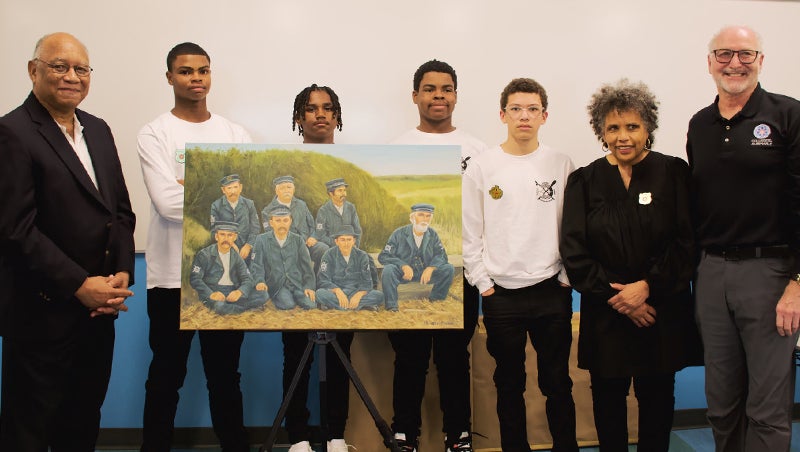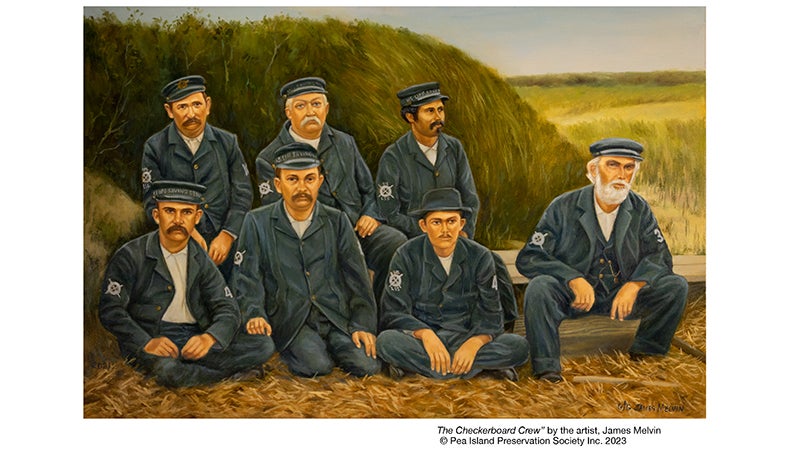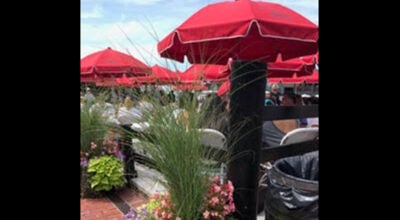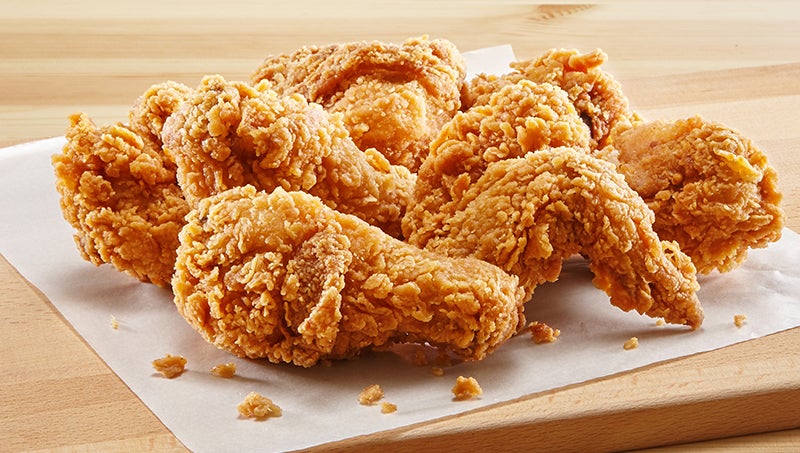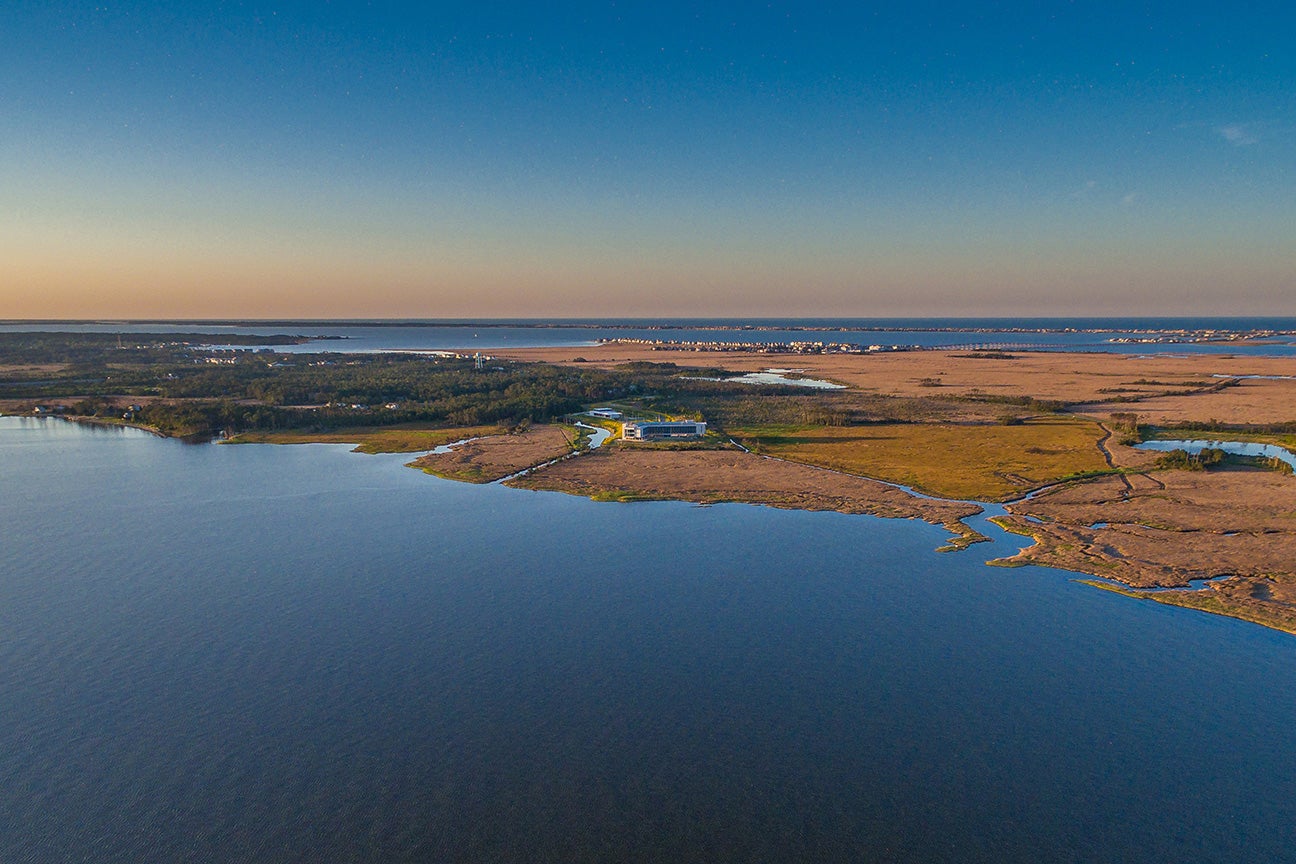Black history events highlight uncovered information
Published 7:16 am Thursday, March 23, 2023
|
Getting your Trinity Audio player ready...
|
By Joan L. Collins, Director, Outreach and Education, Pea Island Preservation Society, Inc.
Two recent events, one held during Black History Month and the other not, are reminders of uncovered black history. The most recent occurred on Saturday, March 4 at the College of The Albemarle – Dare, where our black history program Checkerboard Crews and Colored News was presented to several attendees. The event included the unveiling of a new painting, The Checkerboard Crew by artist James Melvin, a painting commissioned as part of our continued effort to promote the black history of Roanoke Island. In this instance, the story of integrated crews, known as “checkerboard crews,” crews with both white and black surfmen at US Life-Saving Service (USLSS) stations on the Outer Banks.
The Saturday program provided our organization the opportunity to tell the story of the integrated lifesaving stations during the Jim Crow era and to encourage people to think about why surfmen were categorized strictly as white or black at the time. Yet for many surfmen, their physical appearance looked very much the same. Men with thick mustaches, tanned skin and beards, but whose lives, experiences and backgrounds were different. The Pea Island station is a prime example of this. There were men at the station connected to the history of the enslaved. There were men at the station whose roots can be traced to the Roanoke-Hatteras Algonquian speaking native tribe. There were men at the station with the same last name as English colonists who first arrived on Roanoke Island. Although it has been said that when Etheridge took command of the Pea Island station the practice of checkerboard crews on the Outer Banks ended, research says otherwise.
Recent research has revealed an unexpected diversity in staffing at the Pea Island station as well as neighboring stations. This research also revealed that, although the US Life-Saving Service (USLSS) seemingly abolished “checkerboard” crews not long after the end of Reconstruction, integration persisted in one form or another in North Carolina.
Research shows that keepers of at least four stations, the Pea Island station and three of its neighbors (Oregon Inlet, New Inlet, Bodie Island) who employed black and white, old and young, native and immigrant 1880 to accomplish the mission. In addition, the Cape Fear station located near Wilmington, North Carolina opened in 1882 with two black surfmen, with one remaining there through 1914, the first year of the aggressively segregationist President Woodrow Wilson administration. Although integration at these four Outer Banks stations seems to have been limited to men who worked at stations during the winter and as substitute surfmen, surfmen who were not white continually served at stations from 1897 to 1914. Additional research may show that integration was much more common at lifesaving stations on the Outer Banks than believed to be, and that it occurred elsewhere in North Carolina and beyond.
The second event held on February 12 is yet another reminder, literally, of uncovered black history. On this date PIPSI joined the US Coast Guard, members of the Historic Jarvisburg Colored School (Currituck County), private property owners and others to celebrate the recent discovery of the gravesite of Captain Lewis Wescott in Jarvisburg. Wescott was charge of the Pea Island Lifesaving Station for 16 years and longer than any previous keeper (keeper is the official title of the person in charge of a USLSS station and surfmen crew). To look at this event, please visit our Facebook page where you will find a link to a USCG video of this event. The finding also points to the fact that further research is needed, as this area is also a location where other surfman are known to have lived, including surfmen with mixed ancestry.
PIPSI welcomes the opportunity to collaborate with other organizations and businesses to help raise the visibility of black history and to secure funding for continued research. Our goal is to make the black history of this area known and recognized as an important part of the history of this area, as black history has been overshadowed by more popular history here. Many know the story of the Lost Colony and the Wright Brothers. However, the black history of this area is not well known. Our new logo – a black, white and checkered life ring – was created to raise the visibility of our organization and its mission. The fact that “colored news” sections of old newspapers during the Jim Crow era contained very little news about blacks, is analogous to the black history of Roanoke Island not broadly known today. We want to change this dynamic.
The creation of our new logo is also a transition period for our organization. Because of limited resources and no active volunteers at the present time other than PIPSI Youth volunteers, we have decided not to have regular operating hours at the Pea Island Cookhouse Museum for the time being. Recently, the decision was made to open the Cookhouse by “appointment only.” This will provide us time to complete important behind the scenes projects currently underway and to strategically plan how to move forward at this point. And, perhaps most importantly, to reconsider what can be done to encourage celebrating black history, not only during Black History Month, but each day. During the March 4 program at the COA, those in attendance were also provided a copy of our new brochure of Black History Sites on Roanoke Island. We are currently exploring ways to secure funding to print and distribute the brochure to locations throughout the community.
Prints of Mr. Melvin’s new painting, The Checkerboard Crew, are available for purchase and pick-up at the Pea Island Cookhouse Museum located at 622 Sir Walter Raleigh Street in Manteo at pre-arranged times. The cost is $25 per print. If you would like the print shipped, shipping charges will be added. This painting is based on a photograph at the Outer Banks History Center that is commonly referred to as being that of a checkerboard crew, but the photograph does not identify any surfmen by name. The surfman shown on the top row right hand side of the painting and photograph is believed to be a surfman who is black.
If you would like to arrange to purchase the print, please contact our organization at friends@peaislandpreservationsociety.com. We also plan to soon offer this print and prints of two other paintings Mr. Melvin did for our organization that are on display at the Cookhouse Museum for sale through our web page.
Please also contact us if you would like to volunteer or support our organization in any other way. We welcome help with grant research and grant writing, enhancing our website and Facebook pages, developing additional social media methods, and with other projects planned.
Funding for the March 4 program at the COA was based on grants received from the Z. Smith Reynolds Foundation and the Outer Banks Community Foundation. In addition, the Town of Manteo provided the refreshments served.
SUBSCRIBE TO THE COASTLAND TIMES TODAY!


